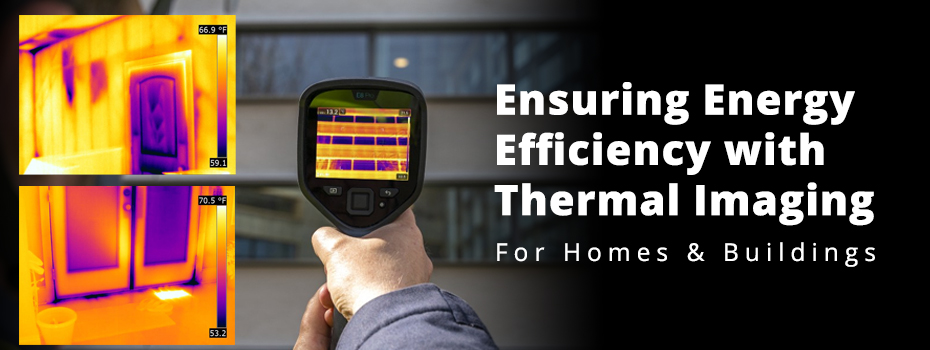 Last year as winter descended and energy prices rose, news outlets were awash with reports about charities, councils, and insurance companies using thermal imaging to pinpoint sources of heat loss. These stories made headlines because they detailed an innovative method that enabled patrons/customers to target insulation work effectively, subsequently reducing their energy consumption, heating bills, and carbon emissions. What in 2022 began as a little-known method of optimising energy efficiency has become increasingly popular throughout 2023. Now, as winter creeps in once more, ensuring homes are energy efficient is crucial. That’s why Teledyne FLIR has provided some top tips on what to look out for when conducting a thermal survey of your home.
Continue reading →
Last year as winter descended and energy prices rose, news outlets were awash with reports about charities, councils, and insurance companies using thermal imaging to pinpoint sources of heat loss. These stories made headlines because they detailed an innovative method that enabled patrons/customers to target insulation work effectively, subsequently reducing their energy consumption, heating bills, and carbon emissions. What in 2022 began as a little-known method of optimising energy efficiency has become increasingly popular throughout 2023. Now, as winter creeps in once more, ensuring homes are energy efficient is crucial. That’s why Teledyne FLIR has provided some top tips on what to look out for when conducting a thermal survey of your home.
Continue reading →Cost Of Living
-
FLIR’s Top Tips for Ensuring Energy Efficiency
 Last year as winter descended and energy prices rose, news outlets were awash with reports about charities, councils, and insurance companies using thermal imaging to pinpoint sources of heat loss. These stories made headlines because they detailed an innovative method that enabled patrons/customers to target insulation work effectively, subsequently reducing their energy consumption, heating bills, and carbon emissions. What in 2022 began as a little-known method of optimising energy efficiency has become increasingly popular throughout 2023. Now, as winter creeps in once more, ensuring homes are energy efficient is crucial. That’s why Teledyne FLIR has provided some top tips on what to look out for when conducting a thermal survey of your home.
Continue reading →
Last year as winter descended and energy prices rose, news outlets were awash with reports about charities, councils, and insurance companies using thermal imaging to pinpoint sources of heat loss. These stories made headlines because they detailed an innovative method that enabled patrons/customers to target insulation work effectively, subsequently reducing their energy consumption, heating bills, and carbon emissions. What in 2022 began as a little-known method of optimising energy efficiency has become increasingly popular throughout 2023. Now, as winter creeps in once more, ensuring homes are energy efficient is crucial. That’s why Teledyne FLIR has provided some top tips on what to look out for when conducting a thermal survey of your home.
Continue reading → -
News Roundup: Thermal Cameras Adopted by Multiple UK Organisations to Reduce Energy Bills & Emissions
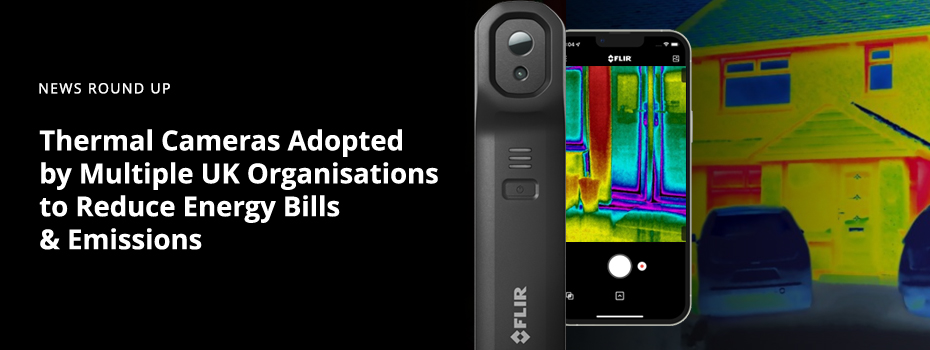 Rising energy prices and environmental urgency have inspired charities, councils, and companies across the UK to look for innovative methods of maximising the efficiency of British homes. One such method is thermal imaging. In 2022, we brought you multiple reports of organisations, including the charity Cambridge Carbon Footprint; South Somerset District Council; and Octopus Energy, providing thermal cameras to property owners for the purpose of identifying heat loss. Armed with this information, householders could target their insulation efforts effectively. Subsequently reducing their energy consumption, bills, and emissions. 2023 has seen even more councils and organisations adopt similar policies. Below are just a few instances that made headlines.
Continue reading →
Rising energy prices and environmental urgency have inspired charities, councils, and companies across the UK to look for innovative methods of maximising the efficiency of British homes. One such method is thermal imaging. In 2022, we brought you multiple reports of organisations, including the charity Cambridge Carbon Footprint; South Somerset District Council; and Octopus Energy, providing thermal cameras to property owners for the purpose of identifying heat loss. Armed with this information, householders could target their insulation efforts effectively. Subsequently reducing their energy consumption, bills, and emissions. 2023 has seen even more councils and organisations adopt similar policies. Below are just a few instances that made headlines.
Continue reading → -
PASS Proudly Provides FLIR Thermal Cameras for Octopus Energy Home Efficiency Surveys
 It is no secret that the cost-of-living crisis, rising global temperatures, and approaching climate targets have created more pressure than ever to reduce our energy consumption. For over a year, we have published multiple reports on councils, charities, and utility companies harnessing thermal imaging to identify sources of heat loss around homes, in a bid to reduce both energy bills and carbon emissions. We are very pleased and proud to reveal that we have played a significant role in one of these stories: that of Octopus Energy lending Teledyne FLIR Thermal Cameras to its customers as part of its Octo Assist customer support initiative. As Teledyne FLIR’s number one UK supplier, we initially provided three-hundred Teledyne FLIR One Pro Thermal Smartphone Attachments for Octopus Energy’s thermal camera loan program. Now, thanks to the popularity of the project, we have had the privilege of supplying a further one hundred and seventy new Teledyne FLIR One Edge Pro Thermal Smartphone Attachments. We are delighted to know that these cameras will go towards helping Octopus Energy’s customers lower their energy consumption, emissions, and expenditure.
Continue reading →
It is no secret that the cost-of-living crisis, rising global temperatures, and approaching climate targets have created more pressure than ever to reduce our energy consumption. For over a year, we have published multiple reports on councils, charities, and utility companies harnessing thermal imaging to identify sources of heat loss around homes, in a bid to reduce both energy bills and carbon emissions. We are very pleased and proud to reveal that we have played a significant role in one of these stories: that of Octopus Energy lending Teledyne FLIR Thermal Cameras to its customers as part of its Octo Assist customer support initiative. As Teledyne FLIR’s number one UK supplier, we initially provided three-hundred Teledyne FLIR One Pro Thermal Smartphone Attachments for Octopus Energy’s thermal camera loan program. Now, thanks to the popularity of the project, we have had the privilege of supplying a further one hundred and seventy new Teledyne FLIR One Edge Pro Thermal Smartphone Attachments. We are delighted to know that these cameras will go towards helping Octopus Energy’s customers lower their energy consumption, emissions, and expenditure.
Continue reading → -
PASS Provides FLIR Thermal Camera for Poultry Farmer’s Enlightening Barn Ventilation Report
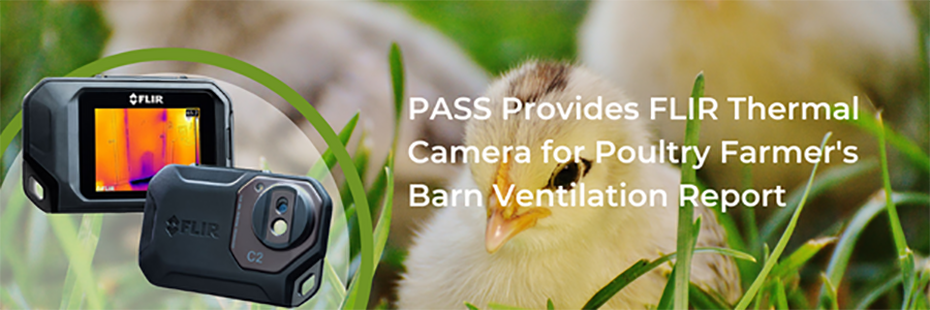 In 2016, PASS Ltd provided Devonshire-based beef and poultry farmer and recipient of Tesco’s Future Farmer Foundation Scholarship, Christina Hutchings, with a FLIR C2 Thermal Imaging Camera for her research into understanding ventilation to improve litter conditions in broiler houses. Now, that highly anticipated report, titled Where does all the water go? How a better understanding of ventilation can be used to improve litter conditions in broiler houses, has been published. In addition to detailing her in-depth investigations which Hutchings draws on to make several suggestions on improving barn ventilation, the report illustrates the critical role thermal imaging can play in farming.
Continue reading →
In 2016, PASS Ltd provided Devonshire-based beef and poultry farmer and recipient of Tesco’s Future Farmer Foundation Scholarship, Christina Hutchings, with a FLIR C2 Thermal Imaging Camera for her research into understanding ventilation to improve litter conditions in broiler houses. Now, that highly anticipated report, titled Where does all the water go? How a better understanding of ventilation can be used to improve litter conditions in broiler houses, has been published. In addition to detailing her in-depth investigations which Hutchings draws on to make several suggestions on improving barn ventilation, the report illustrates the critical role thermal imaging can play in farming.
Continue reading → -
Winter Is Coming: Prepare Your Home for the Long Night(s) Using Teledyne FLIR Thermal Cameras
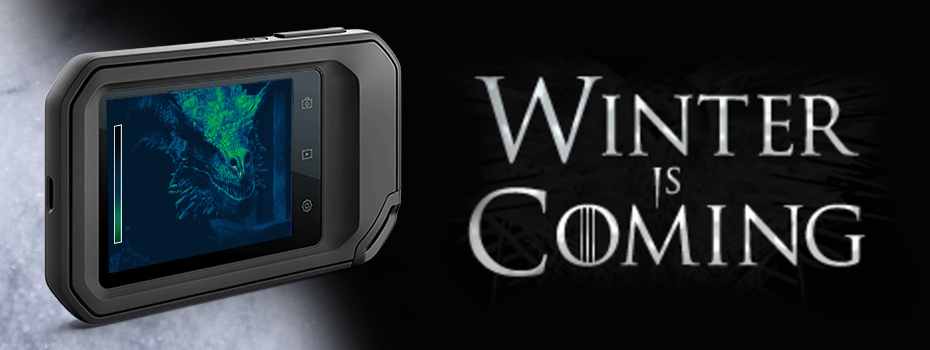 As night gathers our heating watch begins. With energy bills rising, along with anxiety about greenhouse gas emissions, maximising energy efficiency is more important than ever. One of the most effective ways of reducing household bills and emissions is to ensure your home is properly insulated. In fact, energy companies, councils, and charities have all implemented programs to help homeowners do just that.[1] These schemes all have one thing in common: they use thermal imaging cameras to pinpoint areas of heat loss within properties.
Continue reading →
As night gathers our heating watch begins. With energy bills rising, along with anxiety about greenhouse gas emissions, maximising energy efficiency is more important than ever. One of the most effective ways of reducing household bills and emissions is to ensure your home is properly insulated. In fact, energy companies, councils, and charities have all implemented programs to help homeowners do just that.[1] These schemes all have one thing in common: they use thermal imaging cameras to pinpoint areas of heat loss within properties.
Continue reading → -
How do Thermal Cameras help you save on your energy bills?
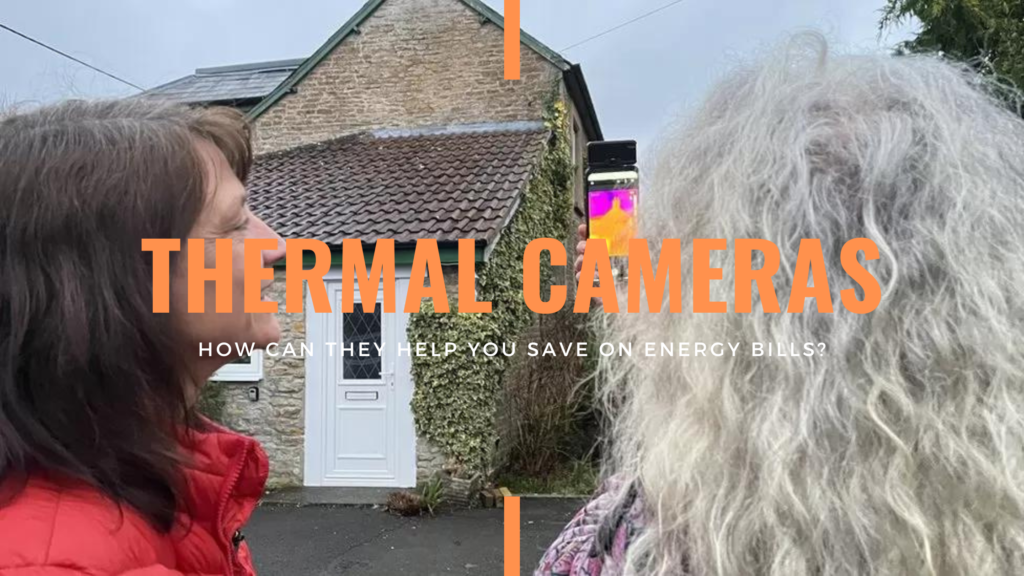 Energy prices are swiftly rising, and now is a better time than any to look at ways to save costs. Discover why thermal cameras might be the key to saving money on your energy this year in our guide, including how to detect heat leakage in your home with the right tools.
Continue reading →
Energy prices are swiftly rising, and now is a better time than any to look at ways to save costs. Discover why thermal cameras might be the key to saving money on your energy this year in our guide, including how to detect heat leakage in your home with the right tools.
Continue reading → -
How do green energy suppliers reap benefits from thermal camera imaging
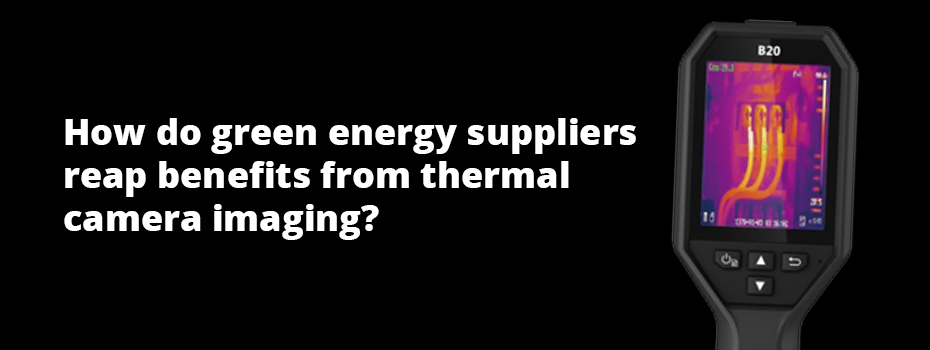 Have you wondered how green energy suppliers benefit from thermal imaging? Read this informative blog post to find out more.
Continue reading →
Have you wondered how green energy suppliers benefit from thermal imaging? Read this informative blog post to find out more.
Continue reading → -
News Roundup: Thermal Cameras Used to Reduce Energy Bills & Carbon Footprints
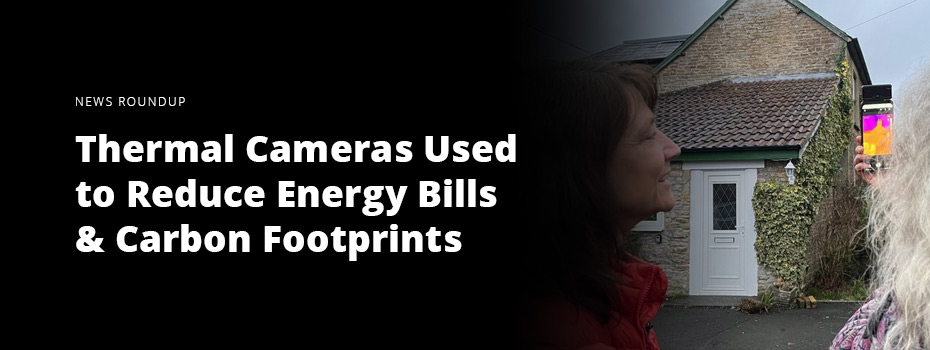 As energy prices rise and we continue to look for new ways to reduce our carbon footprints, people have been turning to thermal technology to help them insulate their homes and reduce energy costs. In January and February 2022, The Times, the BBC, and PASS all published stories about people, councils, and charities using thermal cameras to assess and address insulation issues within their homes.
Continue reading →
As energy prices rise and we continue to look for new ways to reduce our carbon footprints, people have been turning to thermal technology to help them insulate their homes and reduce energy costs. In January and February 2022, The Times, the BBC, and PASS all published stories about people, councils, and charities using thermal cameras to assess and address insulation issues within their homes.
Continue reading → -
Charity Uses Thermal Cameras to Reduce Property Owners’ Carbon Footprints
 Globally, heating domestic and commercial buildings ‘accounts for nearly half of all energy consumption and 40% of energy-related carbon dioxide emissions.'[1] Approximately 19% of the UK’s greenhouse gas emissions can be attributed to warming houses and workplaces, with more than three-quarters of these emissions coming from domestic dwellings.[2] Ensuring that buildings are suitably insulated and appropriately air-tight can reduce heat loss, thereby improving energy efficiency, decreasing greenhouse gas emissions, and minimising property owners’ carbon footprints.
Continue reading →
Globally, heating domestic and commercial buildings ‘accounts for nearly half of all energy consumption and 40% of energy-related carbon dioxide emissions.'[1] Approximately 19% of the UK’s greenhouse gas emissions can be attributed to warming houses and workplaces, with more than three-quarters of these emissions coming from domestic dwellings.[2] Ensuring that buildings are suitably insulated and appropriately air-tight can reduce heat loss, thereby improving energy efficiency, decreasing greenhouse gas emissions, and minimising property owners’ carbon footprints.
Continue reading →


